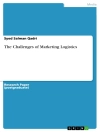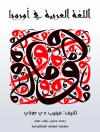Increasingly, the European Union and its member states have exhibited a lack of commitment to protecting the human rights of non-citizens. Thinking beyond the oppressive bordering taking place in Europe requires new forms of scholarship. This book provides such examples, offering the analytical lenses of memory and temporality. It also identifies ways of collaborating with people who experience the violence of borders. Established scholars in fields such as history, anthropology, literary studies, media studies, migration and border studies, arts, and cultural studies offer important contributions to the so-called “European refugee crisis”.
Jadual kandungan
1. Introduction: Border Memories.-2. “True Camps of Concentration”? The Uses and Abuses of a Contentious Analogy.-3. Migratory Angels: The Political Aesthetics of Border Trauma.-4. Curating Objects from the European Border Zone: The
“Lampedusa Refugee Boat”.-5. Bearing Witness to Violence at Borders: Intermingling Artistic and Ethnographic Encounters.-6. Resonances of Detention and Migration: Representation Through Sound and Absence in the Installation Retention.-7. Self-Narration, Participatory Video and Migrant
Memories: A (Re)making of the Italian Borders.-8. Tracing the Border Crossings of Forced Migrants in Paris’ 18th Arrondissement: Exploring a Photo-Walk Method.
Mengenai Pengarang
Karina Horsti is Senior Lecturer at the Department of Social Sciences and Philosophy at the University of Jyväskylä, Finland. Her scholarship focuses on migration, memory, and media. She works across disciplines and experiments with creative methodologies and multiple modalities in her academic practice.












